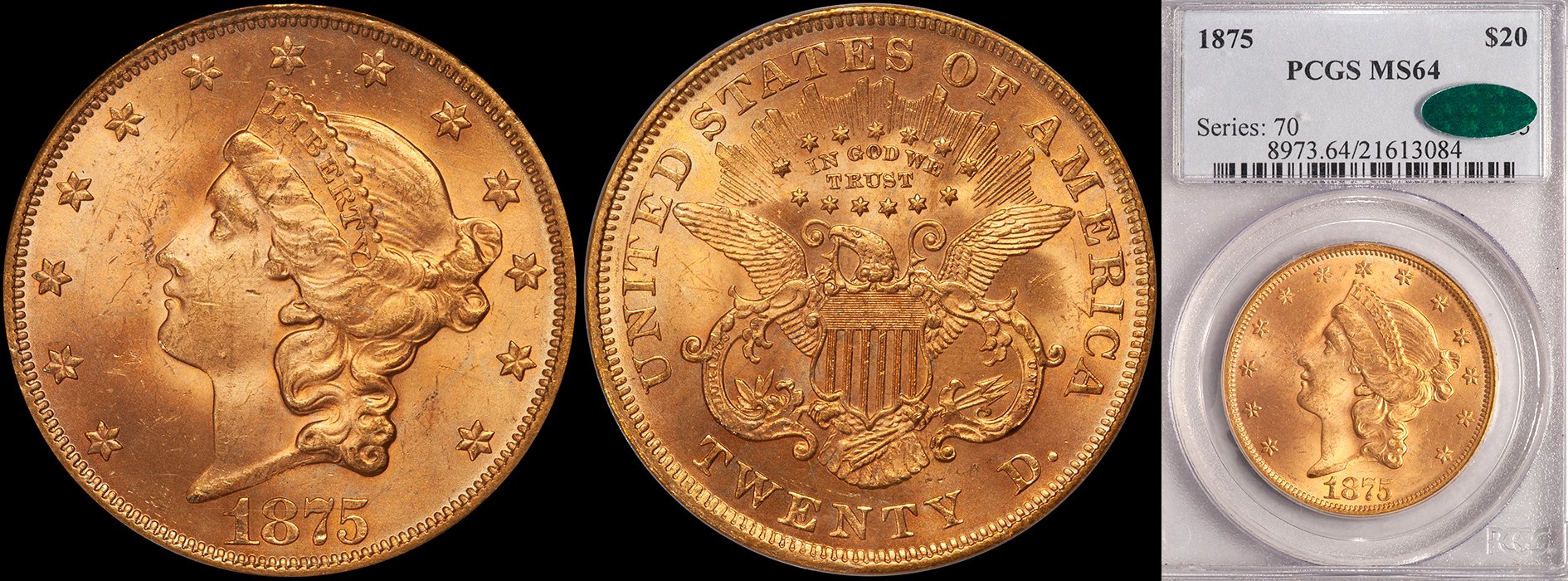What Can CAC Population Figures Tell Collectors About Quality and Rarity?
/Now that CAC has become an integral part of the rare date gold market, there are certain things that their database of coins that have been approved can tell collectors. This wasn’t necessarily true as recently as a year to a year and a half ago, but I believe that enough coins have been seen by CAC that their numbers have gained a degree of legitimacy. This is especially true for expensive and/or truly rare coins.
One thing that CAC data can tell a savvy collector is how rare a coin is with good eye appeal. In other words, if the combined PCGS/NGC population of a certain date/mintmark is 15 coins in EF, how many of these are choice and original?
How do these figures look in a series which is notorious for having numerous condition rarities? I decided to analyze the increasingly popular Liberty Head eagle series using CAC population data from their most recent report (September 2013) and compare it to research which I published a few years ago.
In 2008 I published an article entitled The Ten Rarest Ten Libs. I based this research on my 25+ years of specializing in this denomination, consulting auction records from the past two decades, and looking at current PCGS and NGC population data. My Top Ten list was concerned more with absolute rarity (i.e., the total number of coins known in all grades) versus condition rarity (the number of coins known in higher grades).

According to my research, here are the ten rarest Liberty Head eagles:
1875
1864-S
1873
1863
1865-S Normal Date
1860-S
1883-O
1844
1839, Head of 1840
(tie) 1858, 1859-S, 1864, 1866-S With Motto, 1876, 1877
Looking back on this list five years later (!), I basically still agree with it - except for one glaring omission: the 1855-S. I’m not sure why I didn’t include this date in my Top Ten; I very possibly might have forgotten it. Today, I would certainly include it and place it as high as #8 on the list. I would also eliminate the 1858 from the #10 grouping, and quite possibly the 1859-S and 1864 as well.
Before I delve into the CAC populations, there are a few caveats which I think are important to better understand this blog.
Firstly, we are assuming that at this point in time a good number of rare date gold coins get sent to CAC. However, I happen to know at least four major collections of Liberty Head eagles which have never been seen by CAC, and which contain many coins currently “unbeaned” by CAC which should be nice enough to qualify if and when they are sent in.
Secondly, we are making an assumption that “CAC quality” coins really are nice for the date and grade. I personally don’t think that is a stretch, but I clearly have seen some better date Liberty Head eagles with CAC stickers that weren’t all that nice and, conversely, have sent some coins to CAC which I thought were very nice and, for whatever reason(s), didn’t get blessed.
Thirdly, I think making assumptions about the rarity of coins like Liberty Head eagles based solely on CAC data would be a mistake. Instead, I would view the CAC data as a component of determining high grade rarity.
Let’s look at the Liberty Head eagles which, as of October 2013, have yet to see a single example approved by CAC:
1844
1863
1864
1865
1865-S Normal Date
1866
1866-S No Motto and 1866-S With Motto
1872
1873
1875
1876-S
There are no huge surprises here. This group of 12 coins is well represented on my Top Ten rarest list. The 1864 is a bit of surprise as I have handled a few nice pieces in the last few years and the same is true with the 1866-P and the 1866-S No Motto.
Now, how about the dates in this series with only 1 coin approved by CAC. Along with the dates, I’m going to list the grade of the sole CAC-approved coin.
1839 Head of 1840 (EF40)
1858-S (AU50)
1859-S (AU50)
1867-S (AU55)
1870-CC (EF45)
1877 (AU55)
This is an interesting group. All five are rare, and at least one (the 1839 Head of 1840) is on the Top Ten rarest list. The other four are dates which are a bit more available but which seldom come with nice surfaces and natural color; two elements which are rewarded by CAC. In this instance, the CAC results hold pretty true to form; more so than what I expect from NGC or PCGS results.
As a final list, let’s look at the dates in this series with just 2 coins approved by CAC. Again, along with the dates I’m going to list the grades in which CAC has approved these.
1855-S (EF45, AU55)
1859-O (EF45, AU53)
1860-S (VG8, AU55)
1862-S (EF45, AU55)
1864-S (VF30, EF45)
1870 (AU50, AU55)
1871 (AU55, AU58)
1876 (AU53, AU55)
1895-S (EF45, AU53)
To me, this is the most interesting list, for two reasons. The first is the dates (1859-O, 1862-S, 1864-S) which I didn’t expect to see two of, let alone one. The second is the presence of the 1895-S, a date which gets little respect from even the most ardent specialist and which only two reasonably low grade pieces have been approved by CAC to date. Sleeper alert!!
I’m going to revisit this topic in the near future, as I think it is a good way of determining the true rarity of certain coins in high-end “PQ” grades. By the same token, it also has relevance for lower grade coins like VF and EF when it comes to determining how nice a really rare coin is for its respective grade.
For more information on CAC and on Liberty Head eagles—with or without CAC approval—please feel free to contact me by email at dwn@ont.com.










